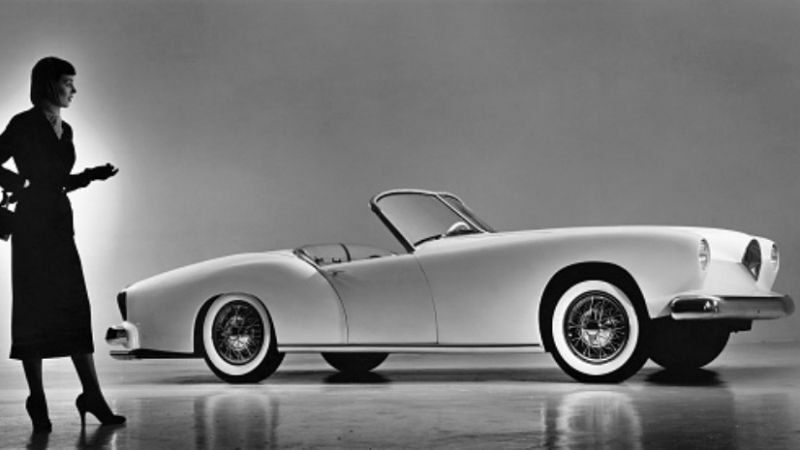
Quick: what was America’s first fiberglass sports car? If you just said the Corvette, you would be wrong—but don’t worry, it’s a pretty big misconception (although, you’d be correct if you were assuming the first fiberglass sports car on the market). The Kaiser Darrin 161 hit the scene a year before the Corvette, at the 1952 Petersen Los Angeles Motorama.
As with a lot of really cool cars, the Kaiser Darrin might have had a much different fate if its manufacturer, Kaiser-Frazer, had actually, y’know, had money. According the Hemmings, Kaiser-Frazer was one of the last independent automakers to give the Detroit “Big Three” some competition.
This beauty was designed by Howard “Dutch” Darrin in his California studio out of a collection of parts that would have made it something special indeed. It used the Kaiser 100-inch Henry J chassis that was fitted with a pretty low horsepower Willys side-valve engine—at 161 cubic inches, this six-cylinder bad boy only produced a whopping 90 horsepower.
But it was a damn light car (only 2,200 pounds) which meant its zero to sixty mph time was 15.1 seconds. With a top speed of just shy of 100 miles per hour, this wasn’t going to be setting any land speed records any time soon—but it was certainly a beauty to look at.
Advertisement
With low-slung curves and a puckered-kiss fender that could rival Bettie Page and paint jobs that matched all over the car (and I’m talking all over, interior, exterior, and cloth convertible top), it was guaranteed to be a show stopper no matter where you took it. But it also had one unique feature: its sliding doors. Yes, folks. Sliding doors. You’d quite literally slide the door forward into the front fender, which is the coolest damn thing I’ve ever heard. And, its convertible top had three positions: totally down, totally up, or in an intermediate position, which is incredibly classy. I’m having genuine fantasies about me behind the wheel of one of these bad boys, convertible top halfway up.
As with a lot of independent manufacturers, though, the Kaiser-Darrin was pretty expensive—$3,668, which was more than the Corvette. Only 435 of them were made, but not all of them sold. Realizing that he was going to have some leftovers on the market, Howard Darrin purchased about 100 of the leftovers. He outfitted them with Cadillac V8 engines. That vastly upped the power, but by then it had already fallen too flat to save its reputation.
Advertisement
It’s a gorgeous model, but it wasn’t destined to be America’s show-stopping fiberglass car, a title we still afford to the far more successful Corvette.













